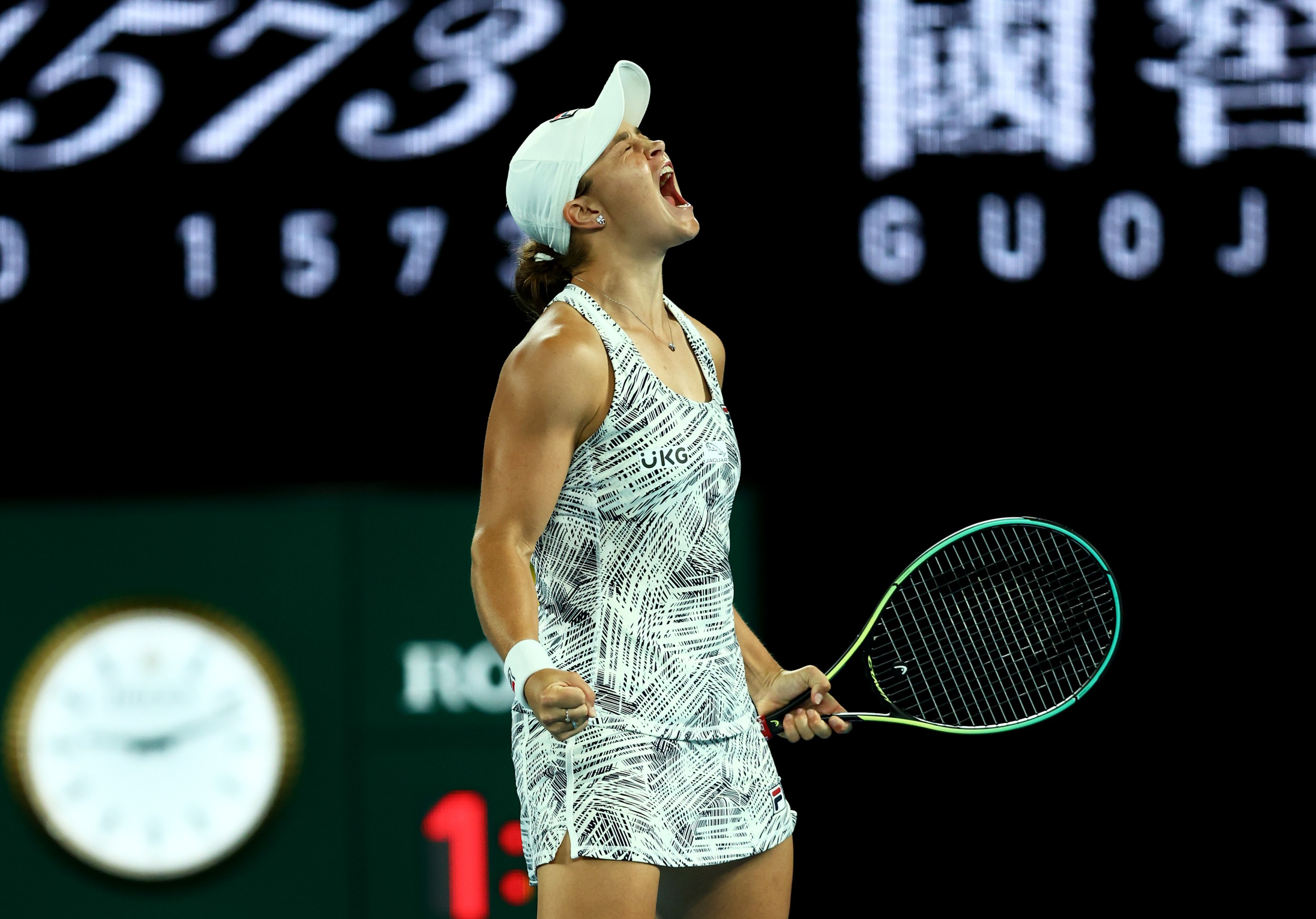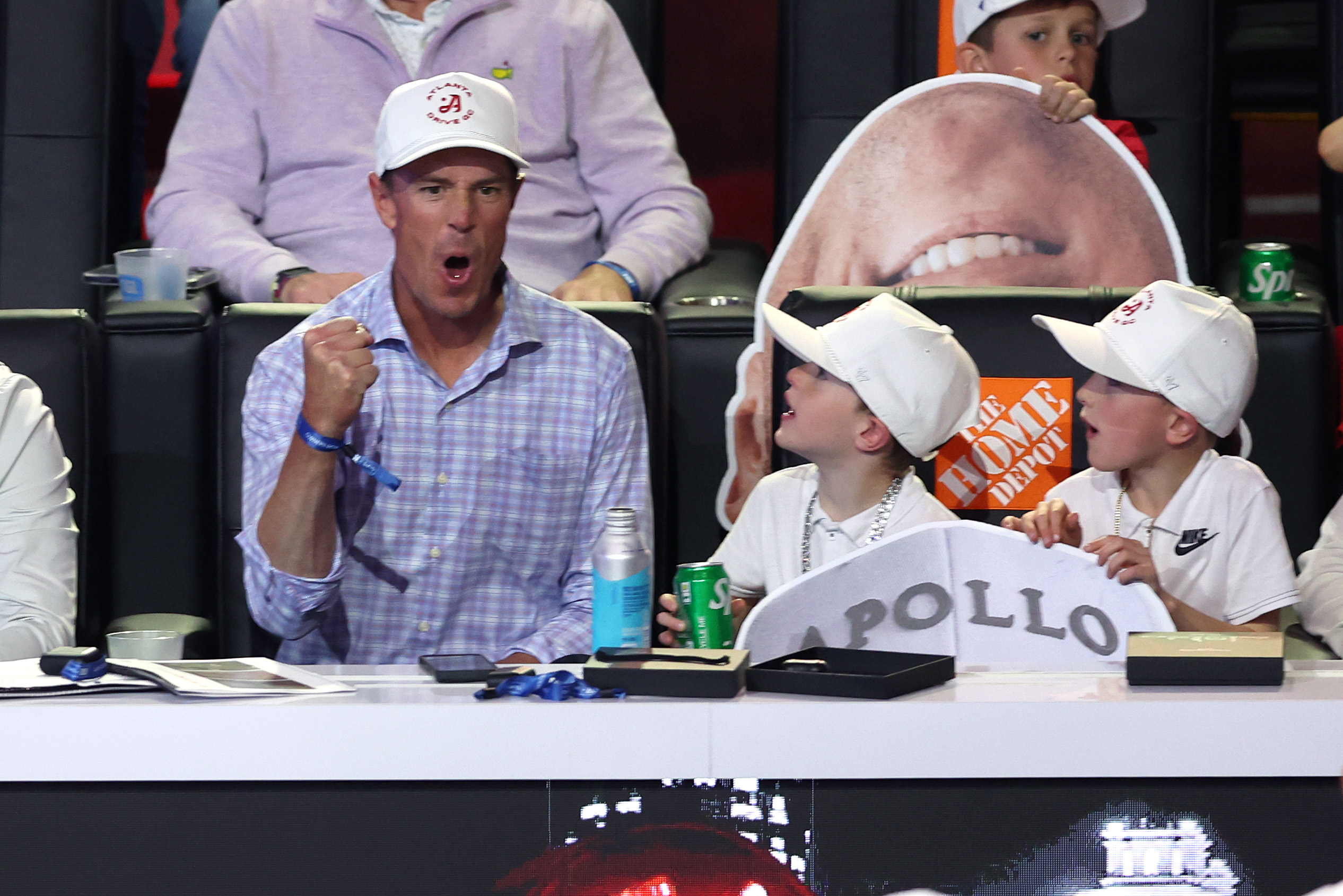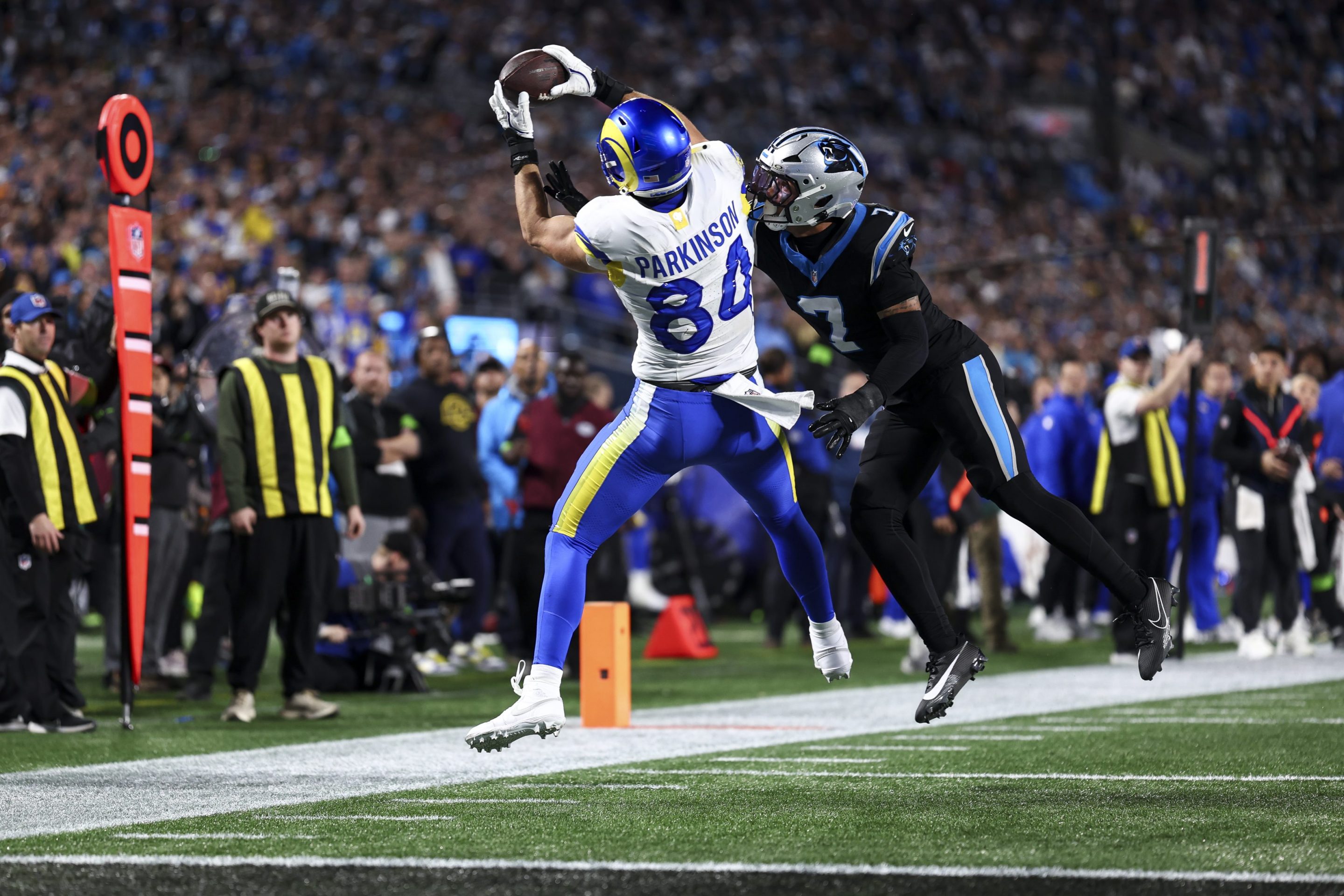At the end of an untouchable Australian Open run, in the last possible moment, Ashleigh Barty finally hit a patch of peril. It must have felt unfamiliar. She hadn't dropped a set all tournament, and she'd lost her serve just once, in the fourth round. But her opponent in the final, Danielle Collins, was the first opponent to look unfazed by Barty's perturbing backhand slice. The ball seemed to hang in a comfort zone for Collins's kill shot, a backhand she can scoop up and take deep into the court. The American, swinging free and screaming as only she can, broke Barty's serve twice to go up 5-1, and prepared to serve out the second set. Riding an upswell in her streaky power game, she'd push the championship to a deciding set.
There would be no decider. Instead, the No. 1 seed took complete editorial control over the rest of match, revising her game plan. If Collins wasn't fazed by the slice, then Barty would drive her backhand with two hands—or better yet, run around the backhand and pry open the court with great big inside-out forehands. Finally pushed to re-evaluate, and conjure up her best focused tennis, Barty won four games in a row to bring the set back on serve, then owned the tiebreak, winning her home major for the first time, 6-3, 7-6(2). This set, and this run, just extends the distance between Ash Barty and the rest of the tour, by both the points and the eye test.
Barty has the best serve on tour despite being 5-foot-5, which is the detail that illuminates her game. It's built not on size and power, but on hand-eye coordination, racket feel, foot speed, and decision-making. This amounts to pure comfort. Some top players (like Collins, who just entered the Top 10) look as if they're constantly wrestling with their power. Other top players (like Naomi Osaka, baseline crusher) prefer not to stray from their happy place on the court because of the unpleasant shots they might have to hit closer to the net. But a prime Barty performance looks like an instructional montage, as if she's remembering, and enjoying, all the different ways you can make a ball move with a racket.
No zone of the court is off limits, and no bag is deeper. She has more versatility on her backhand slice alone than most peers have in their whole repertoire. Nothing feels fluky or gambled; it's all carefully weighted and delivered on target. Barty is the most convincing world No. 1 in a while, one whose success hasn't been confined to particular surfaces or opponents or seasons. (OK, there may be one sticking point: Her coach Craig Tyzzer just said, somewhat bizarrely, that she won't win the U.S. Open until they pick a heavier ball.) With this Australian Open title, she becomes the only active player besides Serena Williams to have won majors on hard, clay, and grass, a testament to her surface-agnostic tennis brain and athleticism.
Barty dominated the tour last season, but winning tennis matches means playing more tennis matches, which has its costs. Australia's strict quarantine rules made travel in and out of the country incompatible with the rigors of touring. Heading into the U.S. Open as the top seed, she hadn't been home in five months. After a third-round upset, she took a long-awaited trip down under, then skipped the last few big events of the year, opting instead to hang home and sharpen up for 2022. Consider the endpoint of that plan: an Australian winning the Open for the first time in 44 years. When Barty's final forehand pass looped over Collins's shoulder, she howled, as did the Aussie crowd, capped at 85 percent capacity but hitting 285 percent volume for their girl.






